by Hannah Carroll Harris // Feb. 12, 2021
Ancient stone artefacts, air-cooling systems, insect communication and cryptocurrency. These seemingly disparate phenomena are but some of the sprawling curiosities that multidisciplinary artist Nicholas Mangan threads together in his ongoing pursuit to disassemble histories relating to our human connection to the earthly world. Tracking precursors and developments to blockchain technology and cryptocurrency, Mangan’s latest video work ‘Limits to Growth Part 3 – Letter to Rai’ is testament to Mangan’s broader practice of unravelling the unstable relations of economics, nature and culture.
Narrated by the artist, this 18-minute essay-film revisits previous projects detailing the building of his own Bitcoin mining rig, his first survey exhibition at KW in 2017 and the eventual creation of new work through the shredding of old photographic prints. Through an ever-evolving approach, Mangan treats the very act of research sculpturally, as though the process of investigation in itself is his material. His experiments are laid bare for his audience to encounter, oftentimes the findings of his inquiries are still yet to be discovered. We spoke to Mangan about this circular methodology, as well as working at a time where we may have reached our limit.
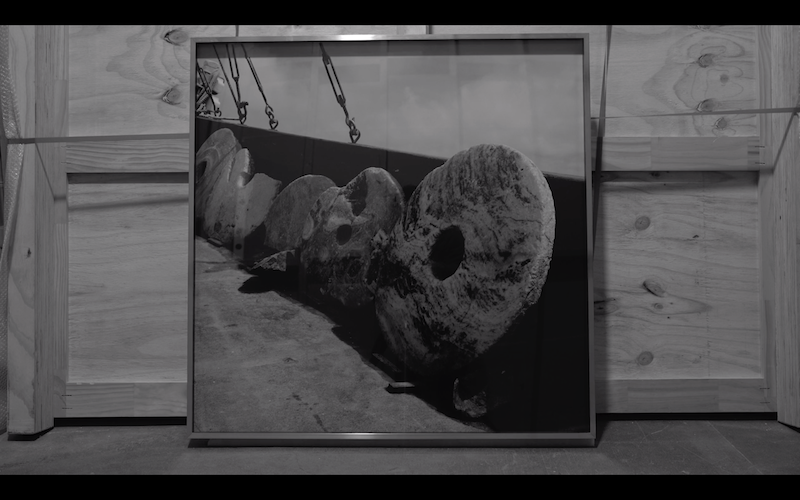
Nicholas Mangan: ‘Limits to Growth – Part 3 (Letter to Rai),’ 2020, HD, sound, black and white with colour, duration 18:43 // Light Source commission, Buxton Contemporary, The University of Melbourne, 2020 // Nicholas Mangan is represented by Sutton Gallery, Melbourne, LABOR, Mexico City
Hannah Carroll Harris: It’s been said that you use earth almost like a ready-made, teasing out the histories and associations of the rocks, stones and vestiges of the underground so often included in your work. What draws you to the geological?
Nicholas Mangan: I think I’m drawn to working with geology as a broader question about how humans have interacted with the world. I steer away from saying anthropocentric, but it’s really how we as humans have engaged in the surface and the skin of the Earth. Even if you say that we extract, we’re still really only extracting into the deep skin of the Earth. I’m really interested in how that has been done for various ideological or economic reasons and in tracing a Western mindset and examining that.
The different ways that geology has been measured, categorised and separated using language helps me find a way to unpack some of those histories. I guess it’s a particular ontology of how we see ourselves both within, but also outside of, nature. It’s this idea of reading the land and reading geology, I use the means of production to critique those processes. So it’s about taking on an analytic approach to looking at the very material itself, the history of geology, and then using that to pry things open, but perhaps put it back in a different way or to see what other stories are there.
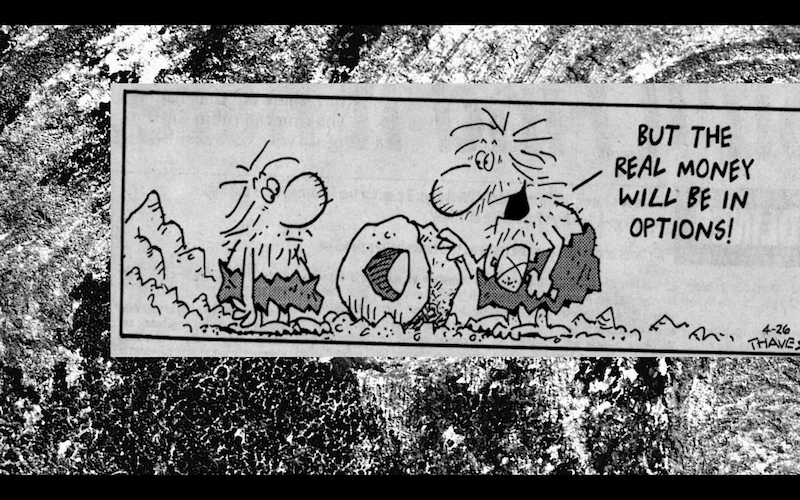
Nicholas Mangan: ‘Limits to Growth – Part 3 (Letter to Rai),’ 2020, HD, sound, black and white with colour, duration 18:43 // Light Source commission, Buxton Contemporary, The University of Melbourne, 2020 // Nicholas Mangan is represented by Sutton Gallery, Melbourne, LABOR, Mexico City
HCH: ‘Limits to Growth Part 3 – Letter to Rai’ is a continuation, revisiting, and remaking of previous work. How does this latest iteration extend on your previous explorations of value exchange and transformation?
NM: ‘Limits To Growth’ was commissioned by Buxton Contemporary as part of their digital programming during Covid. It was an interesting opportunity to think about what was around me in my studio and what I had access to during lockdown and how I might use my way of working to produce a new work. So it was sort of like a self-cannibalising process, where I was able to bring together all of these bits and pieces and other versions of the work into an essay-form film.
The work is written as a letter to a colleague whose name is Rai, which is also the name of the ancient stone currency from the Isle of Yap. It’s as if I’m addressing the currency itself and simultaneously writing a letter to a friend and it becomes an elaborate way to bring together all of these threads. It’s an assemblage of footage that I shot myself at an ATM card shredding facility in Melbourne, and footage of Bitcoin miners I had installed in the basement of Monash University during a previous project, and also images that I found online, taken on the Isle of Yap. It’s all of the stuff that I usually have around when I’m thinking through a work that I have privileged as part of the work, rather than just being the background material.
The film came out of trying to understand what value is and how value is attributed to objects, and then how much of value is based on a social belief system. There’s all these questions around money and thinking through both the currencies: the Rai stone money from Yap and also Bitcoin. At its core, it was really about the virtual and the physical and the way that they are intertwined.
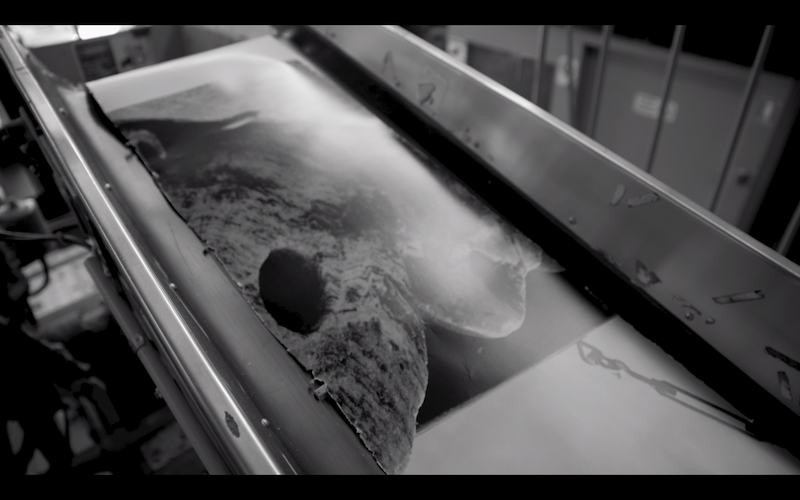
Nicholas Mangan: ‘Limits to Growth – Part 3 (Letter to Rai),’ 2020, HD, sound, black and white with colour, duration 18:43 // Light Source commission, Buxton Contemporary, The University of Melbourne, 2020 // Nicholas Mangan is represented by Sutton Gallery, Melbourne, LABOR, Mexico City
HCH: One way that you think through this connection between the virtual and the physical is through exploring the adoption of mining terminology in the world of cryptocurrency. How did this come to influence ‘Limits to Growth’?
NM: I knew nothing about cryptocurrency before the project, and coming at it from the position of a sculptor, I was asking: how do you get all these systems to function? And so I wanted to show that process of figuring it out, for example, through working out how to set up a Bitcoin rig of my own, I came across the story of a guy that was working in an open pit mine and was piggy-backing off that to do crypto-mining, because he was able to get free electricity and air conditioning. Through the process of trying to learn about one thing, other stories come up and feed into the work.
In relation to the terminology, it’s funny because people think Bitcoin mining is not really mining. You’re not really mining anything, and yet you are. You’re crunching algorithms to verify transactions and, in the process of doing that, you are drawing heavily on the Earth’s resources. It was this idea of questioning whether there really can be something that’s completely virtual and untethered from the Earth and extraction. So, I wanted to look at how we find a balance in terms of our consumption. And how do we sustain life without causing further harm?
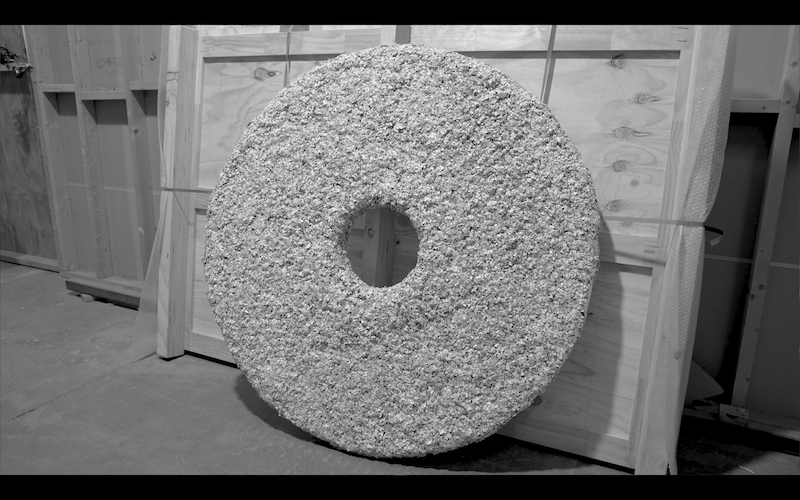
Nicholas Mangan: ‘Limits to Growth – Part 3 (Letter to Rai),’ 2020, HD, sound, black and white with colour, duration 18:43 // Light Source commission, Buxton Contemporary, The University of Melbourne, 2020 // Nicholas Mangan is represented by Sutton Gallery, Melbourne, LABOR, Mexico City
HCH: I’ve noticed a circular format to your work, which allows not just ideas and motifs to be revisited, but elements from previous installations and even artworks themselves to be recycled and transformed. We see this with the photographic prints, which are shredded and turned into a new sculptural work in this video. How did you come to this way of working?
NM: As an artist, it’s very hard not to think about money and value and how there is this capitalist drive. All artists now, I think, think very carefully about the materials they use and how they might be read at face value, but also through the transformation of them, what new meanings might be produced or latent meaning that might be unearthed through the process of that. So this was an opportunity for me to look at the money form and also to think about broader social relations around money. Both the Rai and crypto-currencies really enable that through the idea of a virtual ledger. So I thought: what if I actually try to put these two currencies together and see what sort of situations result from that? How might that give me a set of methodologies or processes or structures to try to produce something from?
I’d finished my survey show at KW in Berlin, and I felt like I’d closed that particular chapter of that work and, when I came back to Melbourne, I started pulling apart the Bitcoin mining machines that had paid for the printing from that project. I melted down the aluminium and, as I was undoing the work, I was also looking at a way to reform it at the same time. And that plays out in the film, with this constant sort of undoing and redoing.
At the base of my work is this bigger reckoning with how we find an equilibrium, and also recognising the way that that seems to be an impossible task. To explore that, I find concrete examples or situations or stories that help me think through something. All my work’s about thinking through something, not really trying to tell people the answers but sharing the questioning. I’ve always thought that good art is about questions not answers.
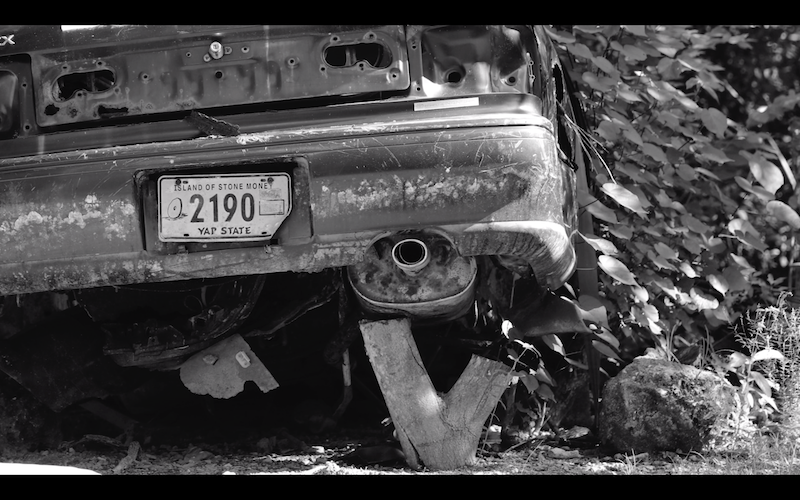
Nicholas Mangan: ‘Limits to Growth – Part 3 (Letter to Rai),’ 2020, HD, sound, black and white with colour, duration 18:43 // Light Source commission, Buxton Contemporary, The University of Melbourne, 2020 // Nicholas Mangan is represented by Sutton Gallery, Melbourne, LABOR, Mexico City
HCH: I really see how these processes of transformation could be limitless within your practice, but I guess when it comes to extraction and consumption, the bigger question is whether we as a society have reached our limit?
NM: There’s a lot of research out there that it is already too late, which may be inevitable if we don’t make really drastic changes very fast. But I feel like I approach it with pessimism, with optimism, and with realism. My position is, things are bad and I don’t think there is ever going to be any return to some kind of Eden or a complete reset. But I do think there is a way to repair. That’s something I’ve been thinking about more recently, it’s more about resuscitation.
I think it is easy to just keep making art about disaster scenarios, but that gets pretty boring. Maybe that is a narrative that we need to change, if we really do want things to change rather than just saying capitalism is bad and the Western mindset is dangerous. Maybe it is more about this idea of improvising or coming up with ways to repair things, through experimentation and adaptation. I’m optimistic in that sense.
This article is part of our feature topic of ‘Extraction.’ To read more from this topic, click here.
Exhibition Info
Buxton Contemporary
Nicholas Mangan: ‘Limits to Growth – Part 3 (Letter to Rai)’
Streaming: buxtoncontemporary.com



















